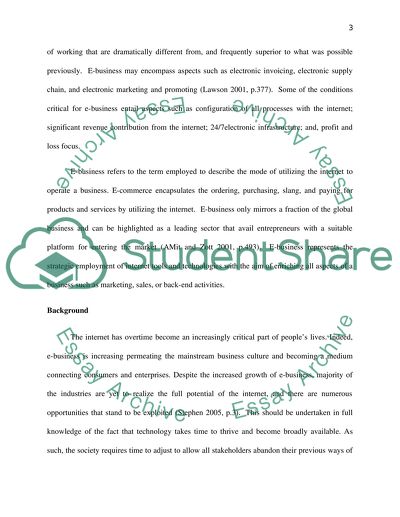Cite this document
(“E-Business. Online Business Technologies Essay Example | Topics and Well Written Essays - 4000 words”, n.d.)
Retrieved from https://studentshare.org/e-commerce/1404133-what-is-ebusiness-and-why-does-it-matter-for
Retrieved from https://studentshare.org/e-commerce/1404133-what-is-ebusiness-and-why-does-it-matter-for
(E-Business. Online Business Technologies Essay Example | Topics and Well Written Essays - 4000 Words)
https://studentshare.org/e-commerce/1404133-what-is-ebusiness-and-why-does-it-matter-for.
https://studentshare.org/e-commerce/1404133-what-is-ebusiness-and-why-does-it-matter-for.
“E-Business. Online Business Technologies Essay Example | Topics and Well Written Essays - 4000 Words”, n.d. https://studentshare.org/e-commerce/1404133-what-is-ebusiness-and-why-does-it-matter-for.


